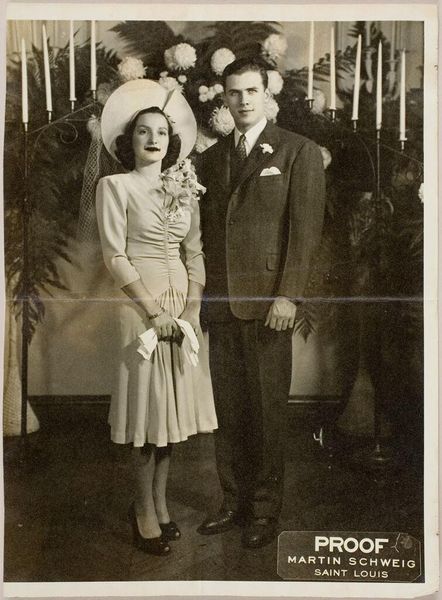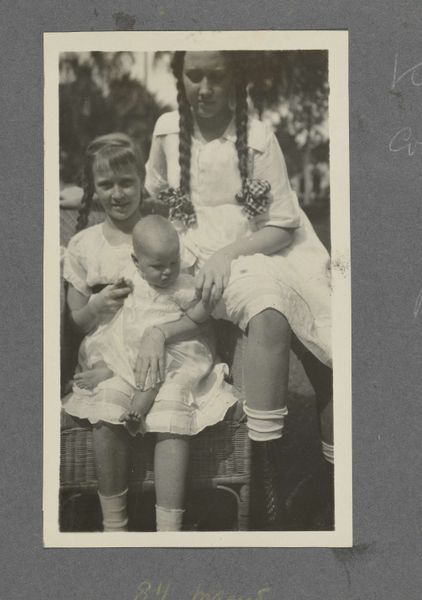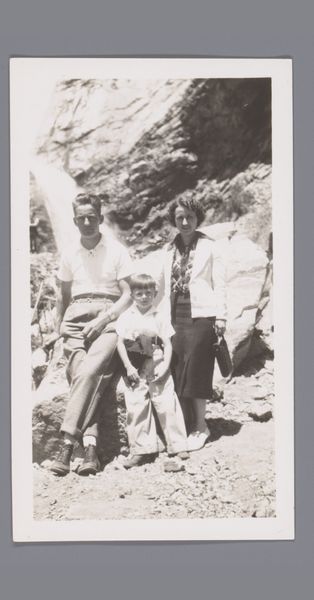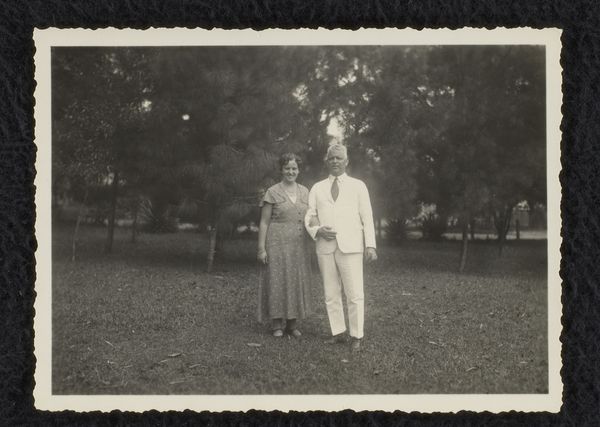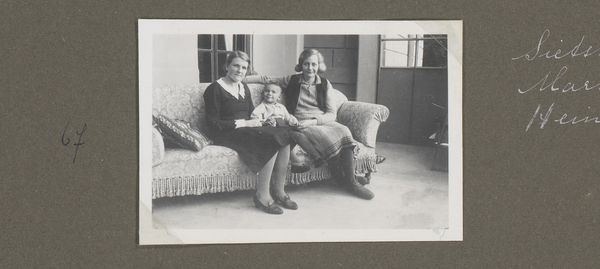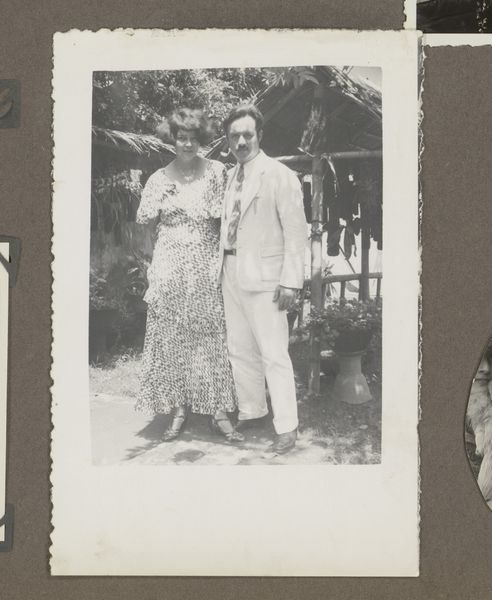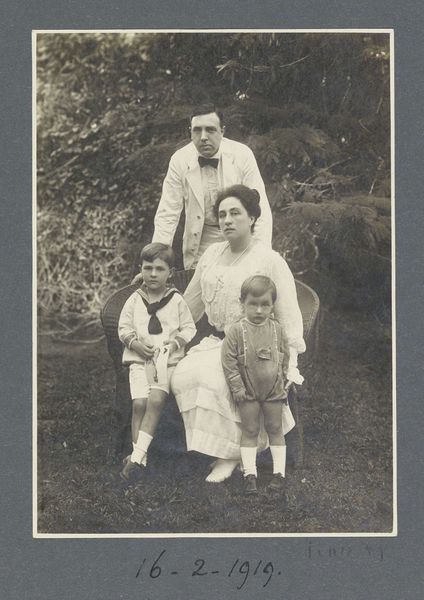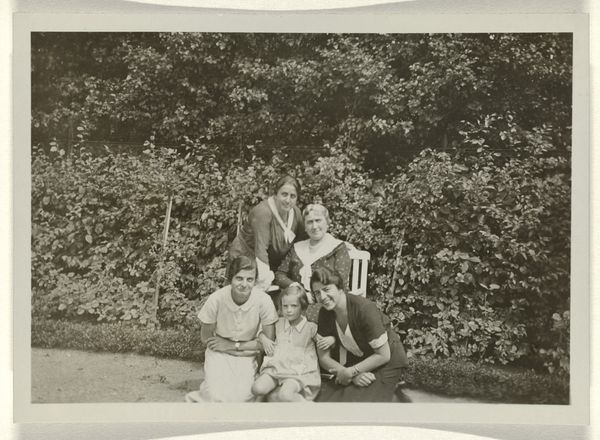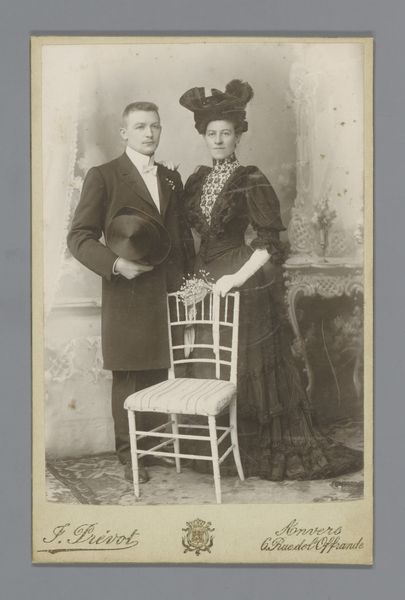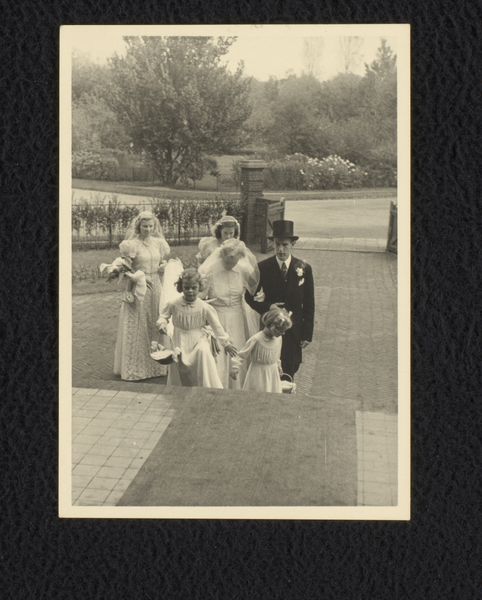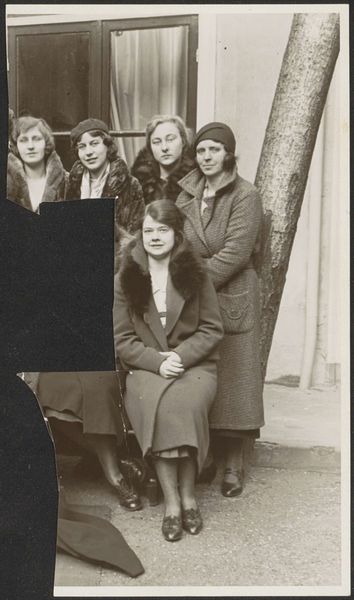
photography
#
portrait
#
pictorialism
#
photography
#
group-portraits
Dimensions: height 61 mm, width 44 mm
Copyright: Rijks Museum: Open Domain
Curator: This photograph at the Rijksmuseum, taken between 1910 and 1914, is titled "Maria Gonggrijp met een jongen en een jonge vrouw." Editor: My first impression is the overwhelming gentleness. The tones, the soft focus, and those enormous hats…there’s something quite delicate about the composition. Curator: Absolutely. And consider the style: it embodies the Pictorialist movement, which sought to elevate photography to the status of fine art. It also provides insight into Dutch society at the turn of the century. Family portraits like these served as important markers of social status and familial bonds. Editor: Note the framing. The backdrop is just soft enough that we don’t recognize specifics— it's texture rather than information— which in turn brings us immediately to the arrangement of shapes, specifically those three hats, echoed perhaps in the ferns behind them? Curator: The women's extravagant hats speak volumes. Such adornments symbolized prosperity and adherence to social norms, especially among the upper-middle class. These photographs helped construct and reinforce those ideals of family life for public consumption. Editor: There’s a stillness to their poses, a certain studied formality in their gaze and attire, further enhanced by the almost monochrome rendering, forcing you to examine every tonality, texture, the lace on the collars… Curator: True. Though staged, such images weren't always truthful. They were often idealized versions of reality, designed to project a particular image. Examining these images allows us to delve deeper into the politics of representation. Editor: Representation absolutely! They look directly forward to the camera; therefore, to the future, to us now… I’m struck by the contrast between the solidity of their physical form, those clearly expensive fabrics, against the rather vague background as though emerging out of history! Curator: A fascinating insight. Understanding the socio-cultural context enriches the work so deeply, and it allows us a view not just of individuals but also a vanished way of life, frozen for an instant, for examination even a century later. Editor: Indeed. Studying the light and form together provides so much more depth than if considered independently.
Comments
No comments
Be the first to comment and join the conversation on the ultimate creative platform.
